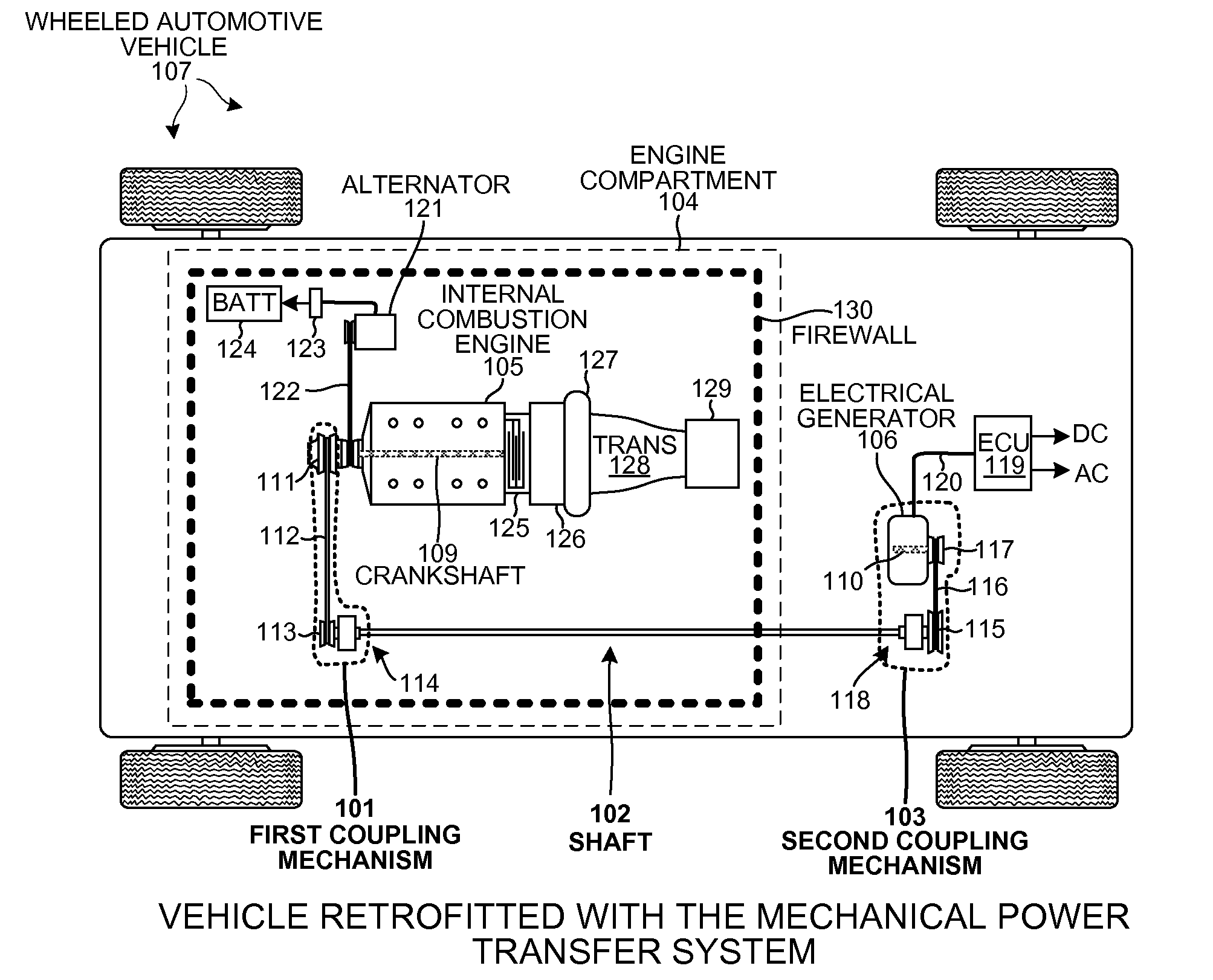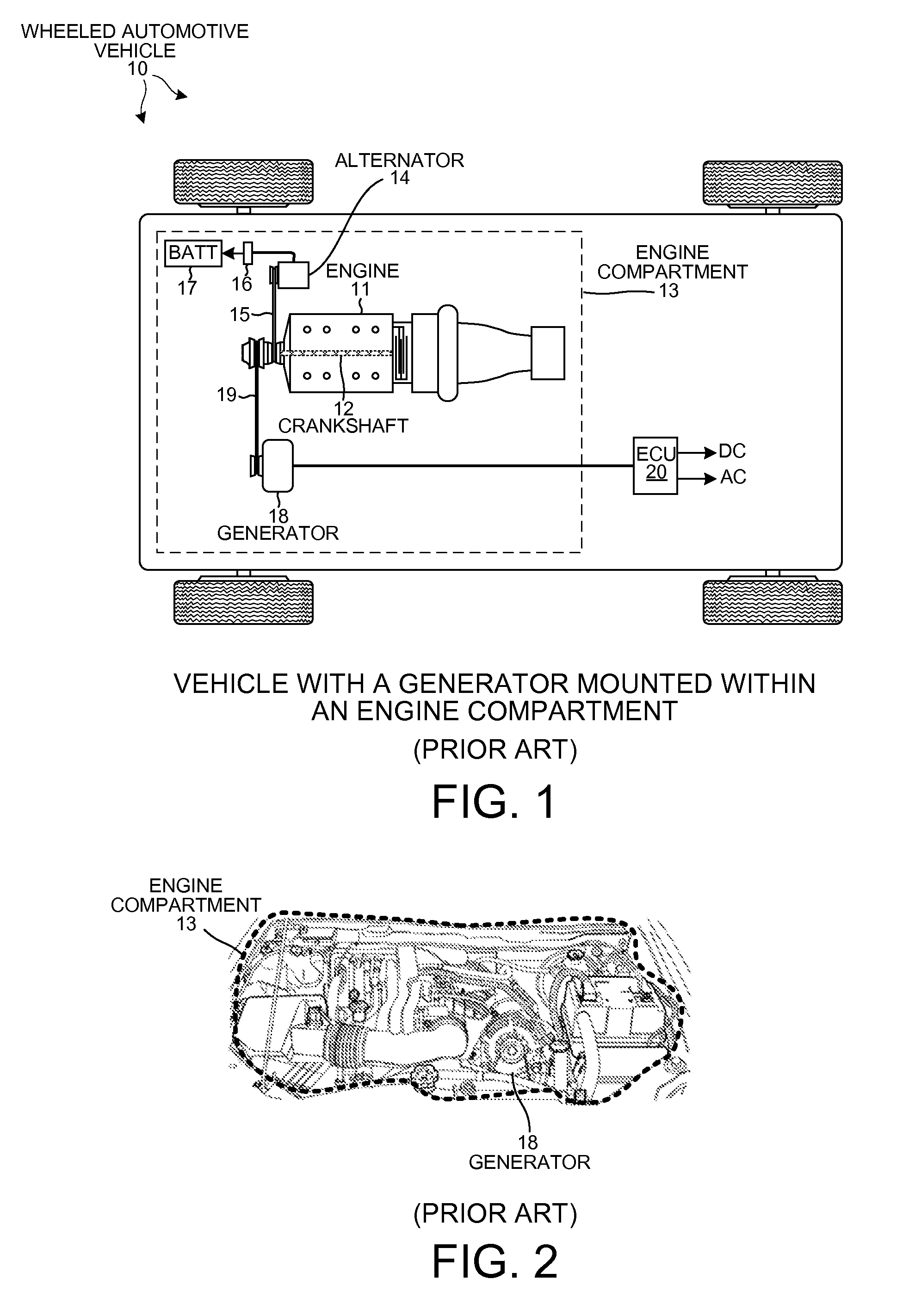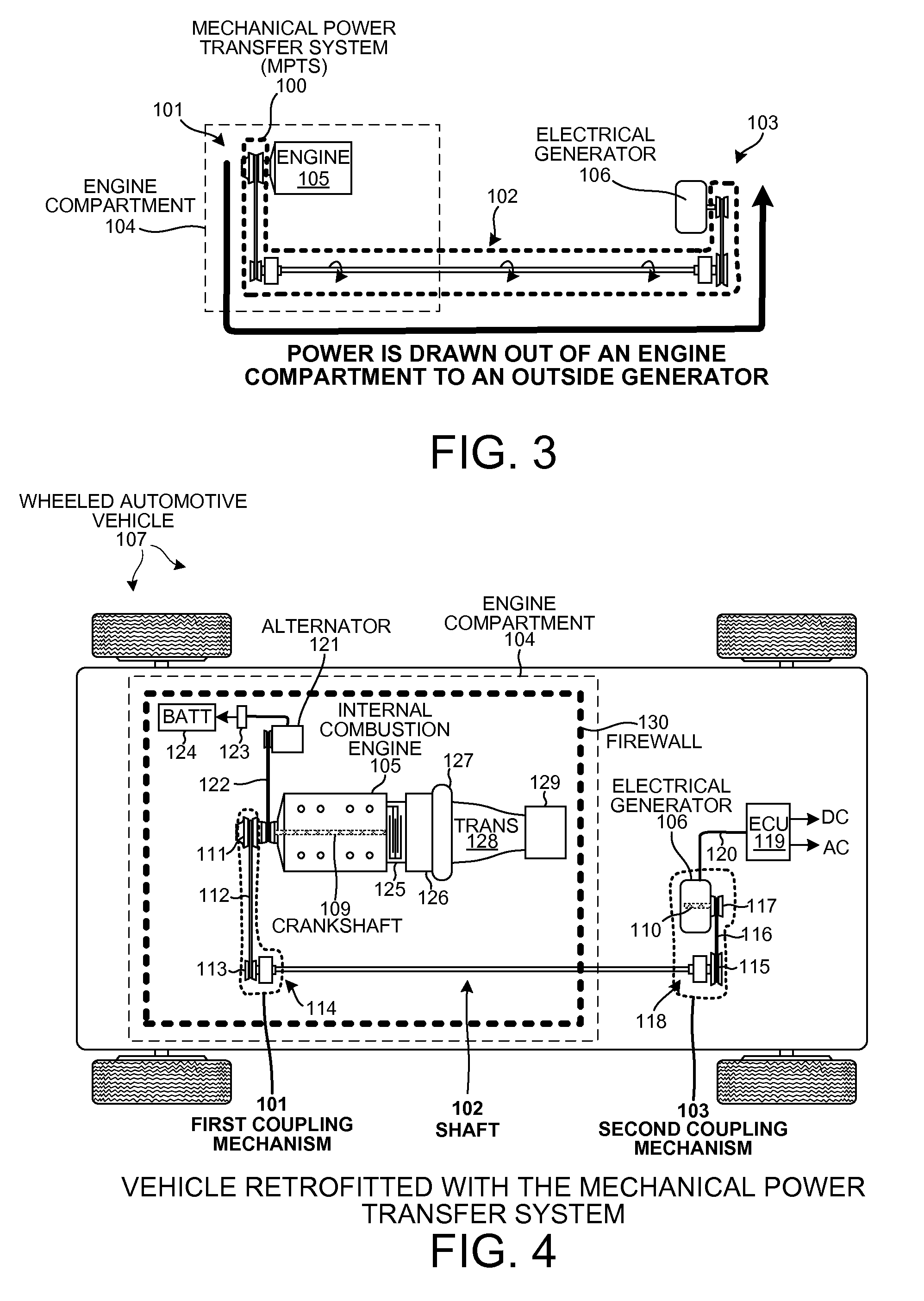Retrofitting a vehicle to transfer mechanical power out of an engine compartment
a technology for mechanical power and vehicles, applied in mechanical equipment, transportation and packaging, gearing, etc., can solve the problems of consuming much more power than can be delivered, components more costly to produce, and components attached within the engine compartment are difficult to maintain, so as to achieve minimal power loss, improve efficiency, and reduce the effect of siz
- Summary
- Abstract
- Description
- Claims
- Application Information
AI Technical Summary
Benefits of technology
Problems solved by technology
Method used
Image
Examples
Embodiment Construction
[0046]Reference will now be made in detail to some embodiments of the invention, examples of which are illustrated in the accompanying drawings.
[0047]FIG. 3 is a diagram of a Mechanical Power Transfer System (MPTS) 100 that draws power out of an engine compartment, in accordance with one novel aspect. MPTS 100 comprises a first coupling mechanism 101, a shaft 102, and a second coupling mechanism 103. The first coupling mechanism 101 couples a crankshaft of internal combustion engine 105 to one end of shaft 102, and the second coupling mechanism 103 couples an opposite end of shaft 102 to a shaft of electrical generator 106. In this fashion, mechanical power is drawn out of engine compartment 104 and transferred to electrical generator 106 that is disposed outside of the engine compartment 104. Electrical generator 106 converts the torque output by the engine 105 into electrical power that is supplied and consumed by other components disposed outside of engine compartment 104.
[0048]F...
PUM
 Login to View More
Login to View More Abstract
Description
Claims
Application Information
 Login to View More
Login to View More - R&D
- Intellectual Property
- Life Sciences
- Materials
- Tech Scout
- Unparalleled Data Quality
- Higher Quality Content
- 60% Fewer Hallucinations
Browse by: Latest US Patents, China's latest patents, Technical Efficacy Thesaurus, Application Domain, Technology Topic, Popular Technical Reports.
© 2025 PatSnap. All rights reserved.Legal|Privacy policy|Modern Slavery Act Transparency Statement|Sitemap|About US| Contact US: help@patsnap.com



